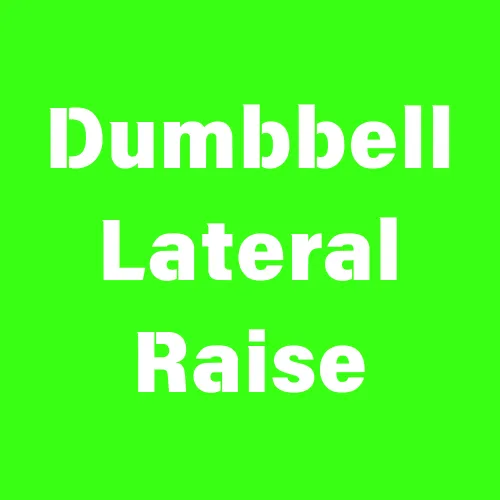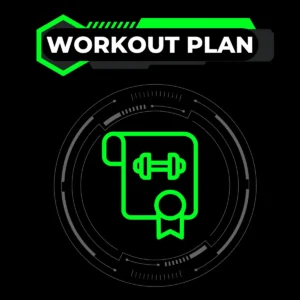The dumbbell lateral raise is one of the most effective exercises for targeting and strengthening your shoulders. Whether you’re a fitness enthusiast or a beginner, this exercise can help sculpt your shoulders, improve posture, and enhance upper body aesthetics. In this article, we’ll cover everything you need to know about this exercise, including its benefits, variations, common mistakes, and more.
| Category | Details |
| Target Muscle Group | Shoulders (Lateral Deltoid) |
| Exercise Type | Strength Training |
| Equipment Needed | Dumbbells |
| Force Type | Pull |
| Training Level | Beginner to Intermediate |
| Supporting Muscles | Trapezius (Upper), Serratus Anterior |
| Mechanics | Isolation |
How to Perform Dumbbell Lateral Raise: Step-by-Step Guide
Correct Body Position
- Stand tall with your feet shoulder-width apart.
- Hold a dumbbell in each hand with a neutral grip, palms facing your torso.
- Keep your core engaged and your back straight.
Proper Arm Movement
- Slowly raise the dumbbells out to the sides until your arms are parallel to the floor.
- Maintain a slight bend in your elbows to reduce joint strain.
- Lower the dumbbells back to the starting position in a controlled manner.
Breathing Techniques
- Inhale as you prepare to lift the weights.
- Exhale steadily as you raise the dumbbells.
Benefits of Dumbbell Lateral Raise
Strengthening the Shoulder Muscles
The lateral deltoids are the primary muscles worked during this exercise, helping you build strength and endurance in your shoulders.
Improving Posture and Stability
By strengthening your shoulders, the exercise contributes to better posture and upper body stability.
Enhancing Upper Body Aesthetics
Regularly performing lateral raises helps create a broader, more defined upper body appearance.
Variations of Dumbbell Lateral Raise
Seated Dumbbell Lateral Raise
This variation eliminates the use of momentum, forcing you to rely solely on your shoulder muscles.
Cable Lateral Raise
Using a cable machine provides constant tension throughout the movement.
Alternating Dumbbell Lateral Raise
Raise one arm at a time to focus on each side individually.
Resistance Band Lateral Raise
Perfect for beginners, this variation uses resistance bands instead of dumbbells.
Common Mistakes to Avoid
Swinging or Using Momentum
Using your body to swing the weights reduces the effectiveness of the exercise and increases the risk of injury.
Lifting Weights Too High
Raising the dumbbells above shoulder level can strain your joints and muscles unnecessarily.
Neglecting Proper Form
Poor posture or incorrect technique can lead to injuries and diminish results.
Safety Tips and Precautions
Choosing the Right Weight
Start with a manageable weight to master your form before increasing the load.
Avoiding Shoulder Strain
Avoid overtraining your shoulders, as this can lead to strain or injury.
Importance of Warm-Up Exercises
Warm up your shoulders with dynamic stretches or light exercises before performing lateral raises.
Equipment Needed for Dumbbell Lateral Raise
Types of Dumbbells
Choose between fixed-weight or adjustable dumbbells based on your preference and fitness level.
Additional Optional Gear
Consider using wrist straps or gloves for added comfort and grip support.
Alternative Exercises for Shoulder Strength
Arnold Press
This compound movement targets multiple parts of the shoulder.
Behind-the-Neck Press
A great alternative for building shoulder and upper back strength.
Overhead Dumbbell Press
This exercise complements lateral raises by focusing on the anterior deltoids.
Primary Muscle Groups Worked
Lateral Deltoids
This exercise primarily targets the lateral (side) deltoid muscles, helping to widen your shoulders.
Secondary Muscle Groups Worked
Trapezius
The upper traps assist during the upward motion of the dumbbell raise.
Serratus Anterior
This muscle group provides stability to your shoulders and upper body during the movement.
Other Names for Dumbbell Lateral Raise
Side Lateral Raise
A commonly used term for this exercise.
Conclusion
The dumbbell lateral raise is a simple yet highly effective exercise for building strong, defined shoulders. By incorporating this exercise into your routine, you’ll improve your posture, enhance your upper body aesthetics, and strengthen your deltoid muscles. Remember to focus on proper form and avoid common mistakes to maximize the benefits.
If you’re looking for more exercises to strengthen your shoulder muscles, be sure to check out our shoulder library. You’ll find comprehensive guides, workout plans, and expert tips to help you take your progress to the next level!
For a complete collection of exercises targeting all muscle groups, visit our Exercise Library. Explore detailed guides and focused workouts to improve your performance and fitness journey!
Enhance Your Shoulder Training: Must-Read Resources
Dumbbell lateral raise is an excellent exercise for isolating the lateral deltoid, helping you build broader, more defined shoulders. To dive deeper into shoulder muscle anatomy and biomechanics, visit this comprehensive guide on ExRx.net.
For those looking to explore advanced techniques and variations, you can find expert insights on Bodybuilding.com. This resource is perfect for both beginners and advanced athletes.
Remember, proper form and safety are key to preventing injuries. Read more about exercise safety and guidelines from the trusted source Mayo Clinic.



